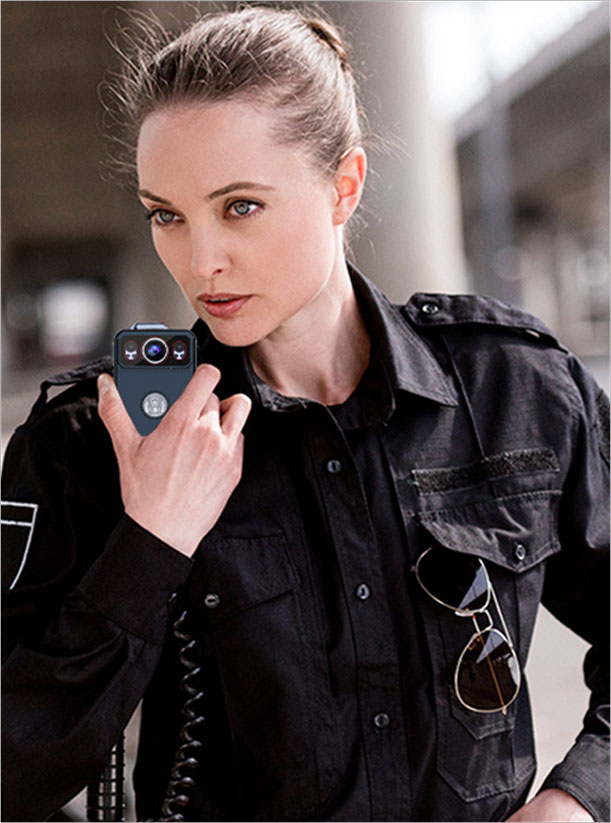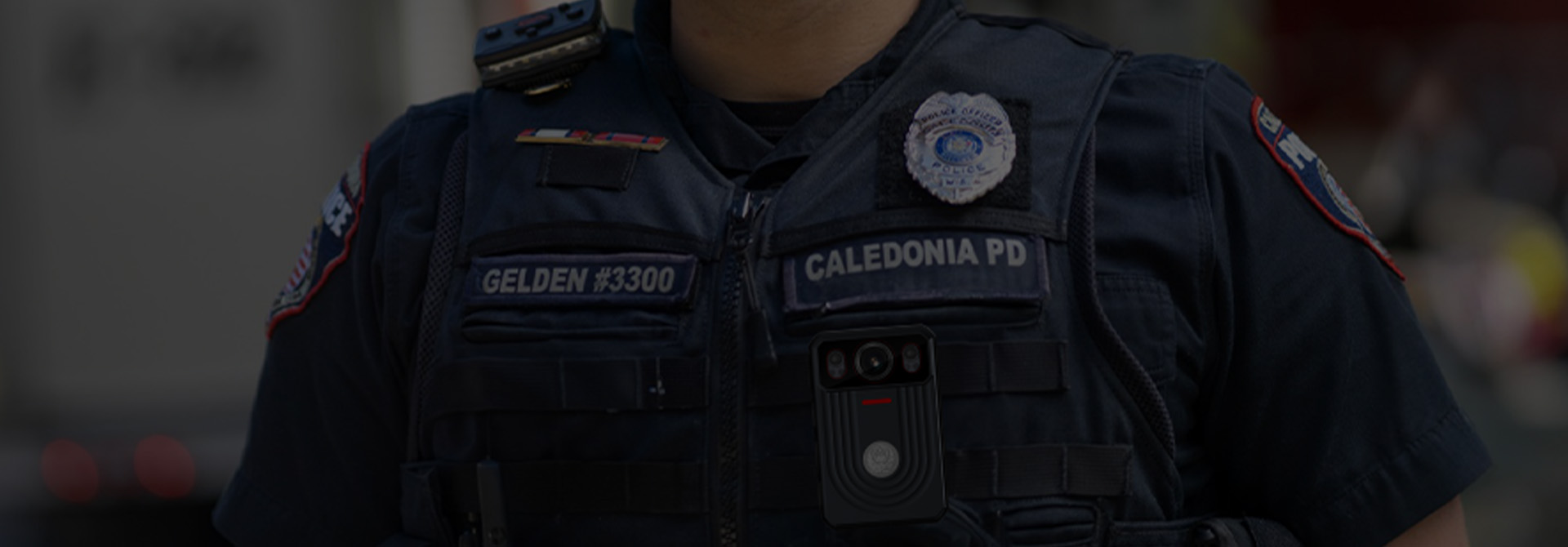In recent years, body-worn cameras have gained significant attention and become a transformative tool in various fields, from law enforcement to journalism and beyond. These compact devices, worn on the person, capture real-time video and audio recordings, offering a new level of transparency, accountability, and safety. In this blog post, we will further explore the benefits, applications, and considerations surrounding body-worn cameras.
Increased Accountability
Body-worn cameras have revolutionized the way incidents are documented and investigated, particularly in the realm of law enforcement. These cameras provide an unbiased and objective record of events, promoting accountability and ensuring accurate documentation of interactions. The impact they have had on reducing ambiguity and subjectivity cannot be overstated.
In the past, law enforcement encounters were often subject to differing accounts from both officers and civilians involved. This lack of clarity made it challenging to ascertain the true sequence of events and determine the actions and intentions of those involved. However, with the introduction of body-worn cameras, the dynamics have changed significantly.
By capturing real-time video and audio recordings from the perspective of the officer, body-worn cameras provide an unfiltered account of what transpired during an incident. The footage serves as an objective source of evidence, shedding light on encounters and facilitating fair investigations into alleged misconduct or disputes. This comprehensive documentation allows for a more accurate understanding of the sequence of events and the actions taken by all parties involved.

Enhanced Safety
One of the significant benefits of body-worn cameras is their positive impact on safety, both for the individuals wearing them and the general public. The knowledge that interactions are being recorded encourages everyone involved to act more responsibly and professionally, ultimately preventing potential conflicts and de-escalating tense situations.
For law enforcement officers wearing body-worn cameras, the presence of these devices serves as a constant reminder to uphold their training and adhere to established protocols. Knowing that their actions are being recorded, officers are more likely to exercise restraint, make informed decisions, and employ non-confrontational strategies when dealing with challenging situations. This increased accountability not only safeguards the rights and well-being of individuals they interact with but also protects officers themselves from false accusations or misunderstandings.
Moreover, body-worn cameras act as a deterrent to aggressive behavior. The mere presence of cameras can discourage individuals from engaging in confrontational or hostile actions. Knowing that their actions will be captured on video and potentially used as evidence, individuals may think twice before resorting to violence or other forms of misconduct. This deterrent effect can lead to a decrease in confrontations, diffusing tension, and promoting a safer environment for all parties involved.
Objective Documentation
The ability of body-worn cameras to offer a firsthand perspective of events is of immense value in various contexts, particularly in legal proceedings. The recorded footage provides an accurate and comprehensive account of incidents, offering an objective view of what transpired. This documentation has proven to be invaluable as crucial evidence in courtrooms, aiding in the pursuit of justice and fair outcomes.
During legal proceedings, body-worn camera footage can be presented as evidence to support or refute claims, providing an unbiased record of events. The visual and audio documentation captured by these cameras offers a level of clarity and detail that can significantly impact the outcome of a case. It provides a reliable source of information that can corroborate witness testimonies, challenge disputed narratives, or shed light on crucial details that might have otherwise gone unnoticed.
Not only does body-worn camera footage serve as evidentiary support, but it also contributes to the ongoing improvement of practices within organizations. By reviewing the captured footage, law enforcement agencies, emergency responders, and other professionals can assess their performance, protocols, and responses. This analysis allows them to identify areas of strength and areas that require further training or refinement.
The training potential of body-worn camera footage is immense. It provides real-world examples that can be used in educational settings to enhance the knowledge and skills of professionals. By studying the recorded interactions, organizations can identify areas where improvements can be made, such as de-escalation techniques, communication strategies, or adherence to established guidelines. This iterative learning process ensures that professionals are equipped with the most effective tools and approaches, ultimately improving outcomes and fostering safer environments.
Furthermore, body-worn camera footage can be used for internal reviews and accountability mechanisms within organizations. Supervisors and administrators can assess the conduct and performance of their personnel, identify areas for improvement, and address any potential misconduct or violations of established policies. This proactive approach to maintaining professionalism and accountability helps maintain public trust and confidence in the organizations utilizing body-worn cameras.

Transparency and Public Trust
The use of body-worn cameras plays a crucial role in fostering transparency and building public trust, particularly in the context of interactions between authorities and citizens. These devices provide an opportunity to bridge the gap between law enforcement agencies and the communities they serve, creating a more open and accountable environment.
Transparency is a cornerstone of a healthy relationship between law enforcement and the public. Body-worn cameras offer a tangible means of achieving this transparency by capturing objective evidence of interactions. The recorded footage provides an unfiltered and unbiased account of encounters, allowing citizens to see firsthand how law enforcement officials conduct themselves in various situations. This transparency helps dispel misconceptions, challenge biases, and promote a more accurate understanding of the realities of law enforcement work.
By promoting transparency, body-worn cameras contribute to building better relationships between law enforcement agencies and the communities they serve. When individuals see that their encounters with authorities are being recorded, it can alleviate concerns about potential abuse, misconduct, or unequal treatment. The presence of cameras reinforces the notion that interactions will be reviewed and held to a certain standard of professionalism and respect. This reassurance can lead to increased trust in law enforcement and foster a sense of safety and security within the community.
Moreover, body-worn cameras empower citizens by providing them with a voice and an objective account of their interactions with authorities. In cases where disputes or complaints arise, the recorded footage serves as a valuable tool for both sides. Citizens can use the footage to support their claims or provide evidence of any perceived wrongdoing, ensuring that their concerns are taken seriously and thoroughly investigated. This sense of accountability helps build confidence in the system and encourages individuals to come forward with their experiences.
Ethical and Privacy Considerations
While the use of body-worn cameras brings about significant advantages, it is imperative to carefully navigate the ethical and privacy considerations that come with their implementation. Striking the right balance between capturing crucial footage and respecting privacy rights is essential to maintain public trust and protect individual privacy.
One of the primary concerns surrounding body-worn cameras is the potential invasion of privacy. These devices have the capacity to record sensitive and personal interactions between individuals, which can raise valid privacy concerns. It is crucial to establish clear policies and guidelines that govern the use of body-worn cameras, outlining specific circumstances in which recording is appropriate and necessary. This ensures that the cameras are not misused or unnecessarily infringe upon individuals' privacy.
To address privacy concerns, policies should define the specific situations in which body-worn cameras are activated. For example, law enforcement agencies may establish guidelines that require cameras to be turned on during routine patrols, traffic stops, arrests, or when responding to calls for service. By clearly defining when recording should occur, individuals can have a reasonable expectation of privacy in situations where the cameras are not actively capturing footage.
Additionally, policies should address the storage, access, and retention of recorded footage. It is crucial to establish strict protocols for the secure handling and storage of this sensitive data, ensuring that it is protected from unauthorized access or misuse. Access to the recorded footage should be limited to authorized personnel, and there should be mechanisms in place to track and monitor who accesses the data and for what purpose. Retention periods for the footage should be established, considering legal requirements, the nature of the incidents recorded, and any potential evidentiary value.
Furthermore, it is vital to ensure that body-worn cameras are not used as a tool for indiscriminate surveillance or profiling. Policies should explicitly prohibit the use of these devices to target specific individuals or communities based on factors such as race, ethnicity, religion, or political affiliation. Safeguards should be in place to prevent any misuse of the cameras that could lead to biased or discriminatory practices.
Body-worn cameras have emerged as powerful tools for promoting accountability, transparency, and safety across various sectors. Their ability to capture unbiased recordings of incidents has proven instrumental in enhancing accountability, documenting events accurately, and fostering public trust. As technology advances and ethical guidelines continue to evolve, body-worn cameras have the potential to play an even more significant role in promoting fairness, reducing conflicts, and improving our society as a whole.


 French
French German
German Arabic
Arabic Italian
Italian Spanish
Spanish Japanese
Japanese Persian
Persian Korean
Korean Chinese (Simplified)
Chinese (Simplified)










